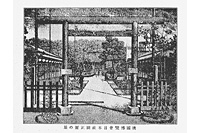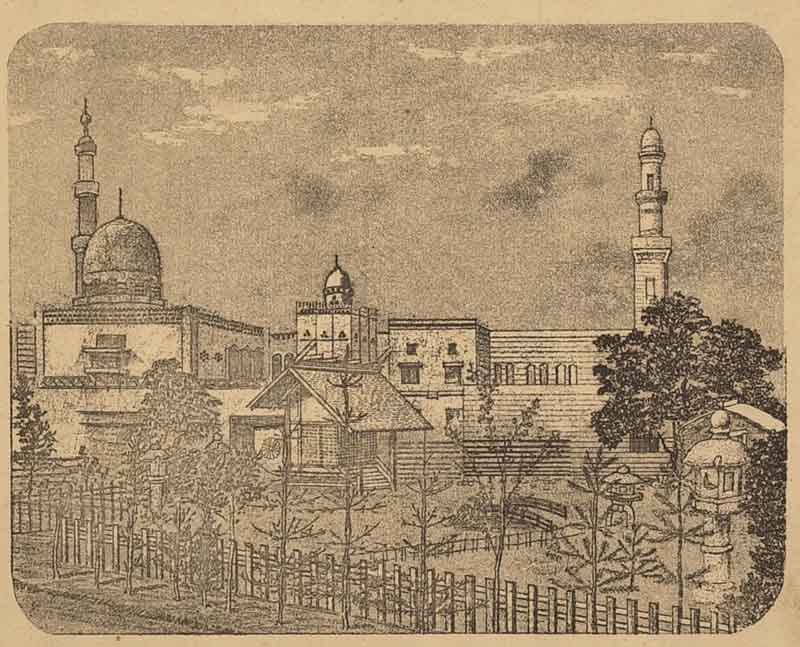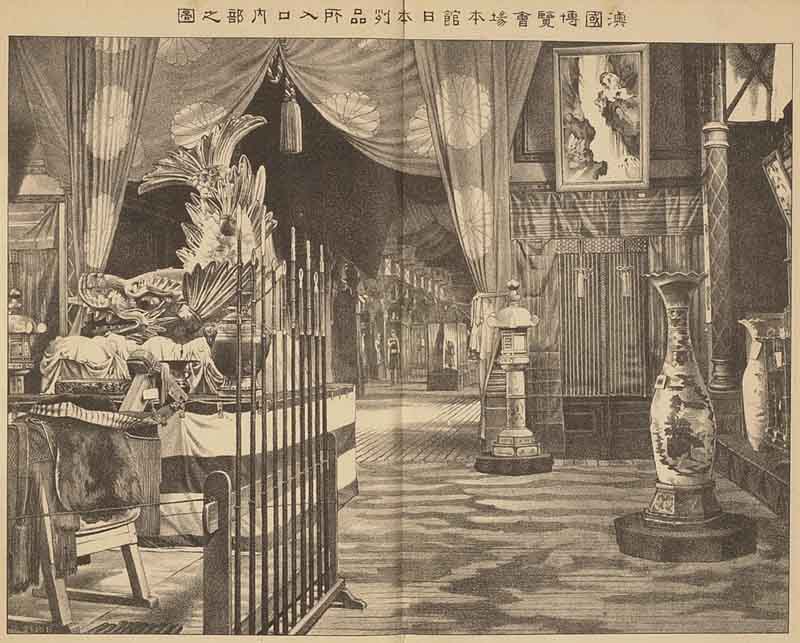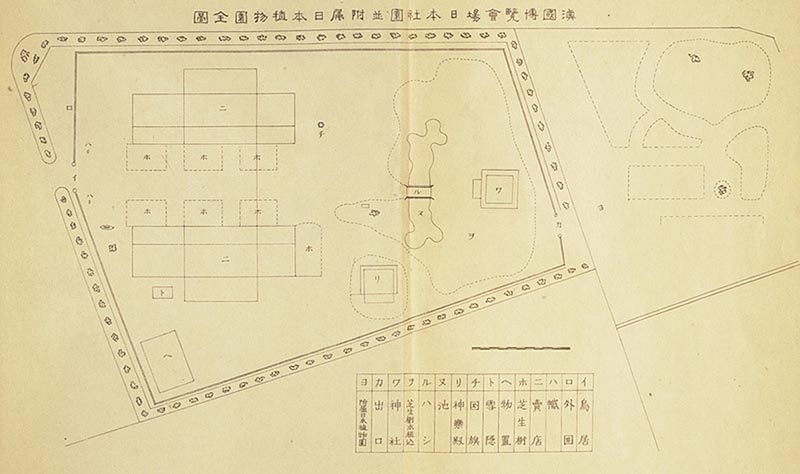Vienna International Exposition of 1873
First international exposition officially participated in by the Meiji government
Column: Vienna International Exposition and Japonism
It is said that Japonism originated when F. Braquemond of Paris came across a copy of a Hokusai Mangaused for packaging porcelain in the 1850s. In the late 19th century, a time when Japanese civilization encountered Western civilization, the Vienna International Exposition also served as an opportunity for the promotion of Japonism.
At the second London International Exposition of 1862, a Japan booth was set up to display items collected by R. Alcock, the then British diplomatic representative to Japan. Also, at the second Paris International Exposition of 1867, the shogunate, the Satsuma domain and the Saga domain displayed their exhibits, drawing popularity with a tea store where visitors could see three Japanese women relaxing smoking pipes.
The Vienna International Exposition of 1873 was the first international exposition for the modern Japanese government in the Meiji period to officially participate in. It was inevitable that there was a strong obligation on the government to promote a new Japan to the world at that exposition more vigorously than at previous international expositions. In an approximately 1,300 tsubo area (1 tsubo = approx. 3. 31 m2), the government built a Shinto shrine and a Japanese garden featuring a white wooden gate. Behind the gate were the shrine's main structure, a traditional music and dance hall, and an arched bridge. At the Industrial Pavilion, the government exhibited ukiyoe works and industrial art products. The exhibits that drew public attention included the Kinshachi (golden dolphins) of Nagoya Castle, a model of the Great Buddha of Kamakura,a model of the approx. four-meter high five-story pagoda of Tennoji Temple of Yanaka, Tokyo, a big drum approx. two meters in diameter, and a lantern approx. four meters in diameter with a picture of a dragon on a waterfall.
- See our digital exhibition "Nippon in the world: Vienna International Exposition"
The selection of these exhibits was not made independently by Japanese people. The selection was conducted under the guidance of G. Wagener, a German who was employed by the Japanese government at that time. Wagener was recommended as the selection advisor by H. Siebold, a member of the Austrian legation staff. Considering that Japan was still at an early stage of modern industrialization, Wagener judged that it would be better to exhibit delicately created industrial art products that would demonstrate the essence of Japan to the world, rather than machinery products that would merely present imitations of Western culture. To exhibit such Japanese items, Wagener purchased excellent industrial art products from across Japan. Also, Siebold advised that, to emphasize the Oriental exoticism, it would be better to exhibit something huge enough to draw public attention.
As Siebold and Wagener expected, the Shinto shrine and the Japanese garden received great acclaim. The exhibition items sold very well, with thousands of Japanese fans selling out in just a week. The Emperor Franz Joseph I and the Empress Elisabeth visited the Japanese pavilions and attended the opening ceremony of the arched bridge, which was still under construction at that time. It is said that, showing interest in wood shavings from Japanese-style carpentry planes, the Emperor and the Empress had their lady-in-waiting fold up the shavings carefully and carry them home. The Japanese exhibits were so highly regarded that Alexander Park, a British trading company, purchased not only the structures of the Japanese garden, but also all the trees and stones in the garden at the end of the international exposition.
Subsequently, in Vienna, Japonism was passed on to G. Klimt of the the Vienna Secession of the 1890s, who were inspired by Japanese design patterns. Meanwhile, Alexander Park Co. made a contract with Kiritsu Kosho Kaisha, which was established by the Japanese government after the Vienna International Exposition. Kiritsu Kosho Kaisha contributed greatly to the earning of foreign currency by selling Japanese industrial art products. At the third Paris International Exposition of 1878, a Japanese-style cottage was created and was favorably received. The interpreter working for the Japanese company at the international exposition was Tadamasa Hayashi, who subsequently played a major role as an art dealer promoting Japonism in Paris.
- References:
Hashizume, Shinya (supervise).: Bankoku bikkuri hakurankai: Banpaku o 100bai tanoshimu hon (Daiwa shobo, 2005) <D7-H48>)
Kashima, Shigeru.: Pari banpaku zekkei hakubutsukan (3) Torokadero no japonizumu in Seko n. 357 (1995.7) <Z16-72>
Nishikawa, Tomoyuki.: Win no japonisumu (Zenpen) 1873 nen win bankoku hakurankai in Gengo bunka ronshu v. 27 n. 2 (2006) <Z12-503>)
Tanaka, Yoshio, Hirayama, Narinobu (ed).: Okoku hakurankai sando kiyo (Moriyama Shunyo, 1897) 2005 <YDM42151>
Yoshida, Mitsukuni.: Bankoku hakurankai: Gijutsu bunmeishiteki ni Revised ed. (Nihon hoso shuppan kyokai, 1985) <D7-67>





